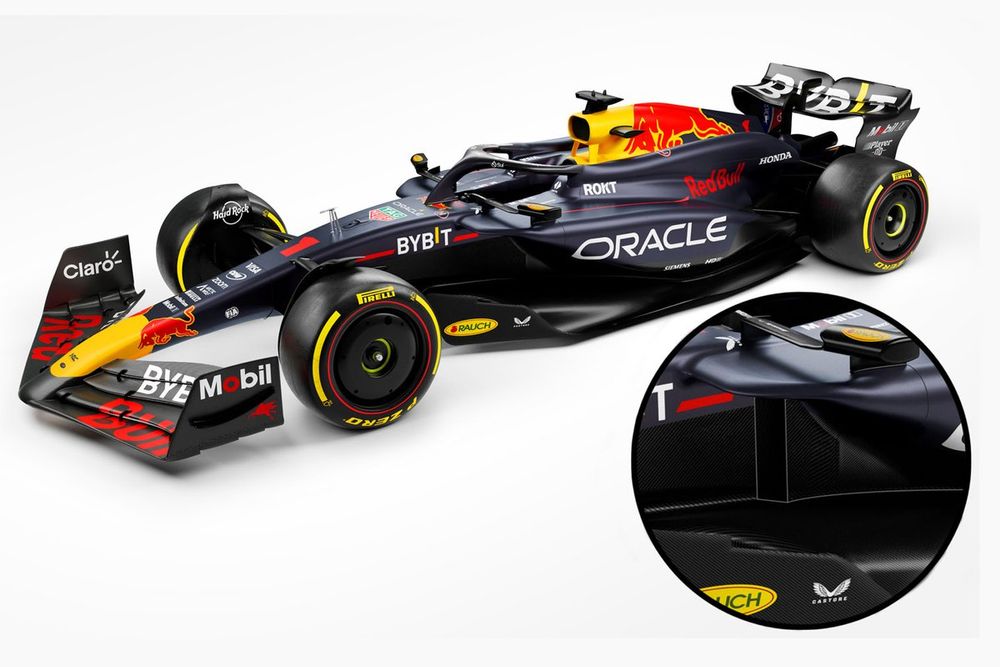The Milton Keynes-based squad has gone aggressive with its car revamp for this year, which has included it adopting concepts similar to what Mercedes has run with in the past.
This includes the high gulleys along the engine cover, as well as minimalist sidepods which appear to include a vertical inlet that is reminiscent of the zeropod version Mercedes had at the start of last year.
There are also suggestions that Red Bull has an even more extreme sidepod solution being readied for cooler races in the early stages of the season when it could cut back even more on the airflow feeding its radiators.
Red Bull’s decision to pursue ideas similar to Mercedes has prompted a great deal of intrigue, but its motorsport advisor Helmut Marko has offered some words of caution about its approach.
He is well aware that while the zeropod solution offered brilliant performance figures in the wind tunnel, Mercedes found itself unable to extract that much from them in real life.
That is why he says this week’s test in Bahrain will be critical for the team in allowing it to work out whether or not its own idea can be used in reality.
Asked about Red Bull adopting a solution that Mercedes ultimately abandoned, Marko told Servus TV: “They were also convinced by the data of their sidepod-less concept, but in practice, it didn’t work at all.
Red Bull RB20 with sidepod inlet arrangement, inset
Photo by: Red Bull Content Pool
“We will now see in the tests whether we can successfully implement this solution, or let’s say a similar solution.”
He added: “Adrian Newey [Red Bull’s chief technical officer] always favoured cars without radiators. But of course, the engine people can’t do that. That is logical.
“We don’t have it as extreme [as Mercedes], but we have it in a similar direction in terms of the idea.”
Marko added that the launch car would form the basis of the RB20 that the team would start the season with – as he praised the efforts made to improve last year’s dominant RB19.
“It’s more than an evolution. It’s a small revolution,” he said.
“It is the basis of what will be used in 2024. In terms of simulation and the wind tunnel, it all worked very well.”
Click Here to Read the Full Original Article at Autosport.com – Formula 1 – Stories…

